The WORST episodes of Discovery Channel Documentaries
Every episode of Discovery Channel Documentaries ever, ranked from worst to best by thousands of votes from fans of the show. The worst episodes of Discovery Channel Documentaries!
Documentaries that have been produced by the Discovery Channel.
#1 - Who Was Jesus? Part 3
Season 2009 - Episode 33 - Aired 4/5/2009
The Last Days (5 Apr. 2009) tt1904767
#2 - Eye on the World - The Camera at War
Season 1999 - Episode 10 - Aired 6/30/1999
For over a century the camera has been war's most efficient spy, keeping watch over the enemy, helping to predict enemy movements and guiding missiles to their targets. Now from its position in space camera has brought the earth and all its battlegrounds under constant and silent surveillance. But is the camera and its all-seeing eye a force for good or evil? How often has the information provided by the camera been misinterpreted, how often has it misled with deadly consequences ? Nothing stops the camera now, the camera and its related imaginery can see through clouds and at night, though it can't tell the difference between truth and the lie. 'Eye on the World' traces the rise of the camera from the balloon tethered above the enemy lines to its position in orbit. Precise Media Productions for Discovery Networks Europe
#3 - 2014: The Year in Sci-Tech
Season 2014 - Episode 21 - Aired 12/22/2014
2014: The Year in Sci-Tech In this year-end special, Science Channel reviews the biggest science and technology stories from 2014 Space technology this year reached some important goals, culminating with the spectacular landing of a space probe on a comet, millions of kilometers from Earth. But there were some setbacks, too. 2014: The Year in Sci-Tech shows some of the highlights and lowlights.
#4 - Red Planet Rover
Season 2014 - Episode 20 - Aired 12/18/2014
A behind-the-scenes documentary of NASA’s Mars Science Laboratory mission. From the Curiosity rover’s famous "7 minutes of terror" before landing in 2012 to this week’s stunning discovery of organics on the Martian surface, we will be treated to exclusive footage of the NASA team that made it happen and fresh details of what this week’s findings means for the search for extraterrestrial life throughout our solar system.

#5 - Stem Cell Universe with Stephen Hawking
Season 2014 - Episode 18 - Aired 2/3/2014
The use of embryonic stem cells has ignited fierce debate across the spiritual and political spectrum. But what if we could create manmade stem cells - or find super cells in adults that could forever replace embryonic cells and remove the controversy? Today, we are on the brink of a new era - an age where we may be able to cure our bodies of any illness. Stephen Hawking has spent his life exploring the mysteries of the cosmos, now there is another universe that fascinates him - the one hidden inside our bodies - our own personal galaxies of cells. Hawking takes us on a fascinating journey exploring what these wondrous and baffling mechanisms are capable of. He is joined by the scientists who are on the front lines of discovery in this field including Dr. Doris Taylor who is customizing a donor's heart with the recipient's stem cells - her goal is to revolutionize heart transplants, Dr. Paul Lu and Dr. Mark Tuszynski may have created a breakthrough that could cure paralysis, and Dr. Vincent Giampapa who believes that stem cells can be used to stem the tide of aging and create a fountain of youth.
#6 - Uncovering the Real Gangs of New York
Season 2002 - Episode 15 - Aired 12/20/2002
A Discovery Channel Special discussing the history of the real gangs of New York.
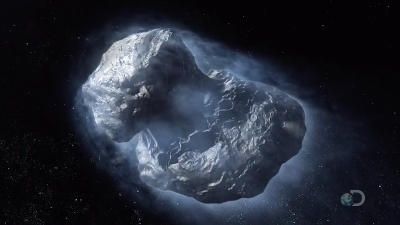
#7 - Landing On A Comet: Rosetta Mission
Season 2014 - Episode 17 - Aired 11/12/2014
Watch live on NASA TV as Rosetta's Philae lander attempts to land on Comet 67P, the first time a man-made object will ever touch down on a comet.
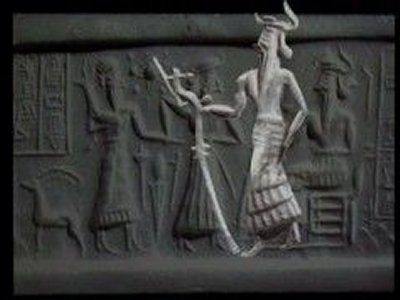
#8 - Giants: Mystery and the Myth
Season 2001 - Episode 18 - Aired 11/16/2014
This unique special looks at the whole phenomenon of giants from the earliest beginnings of civilization to the present. Also features interviews of Zecharia Sitchin, author of The Cosmic Code which talks about the content of the Sumerian Tablets. According to a scientist’s experiment on fish in a biodome with double the atmospheric pressure and a few other conditions, the fish grow to an unbelievable size which is proof that Earth had the right conditions back then to support the idea of Giants ever existing.
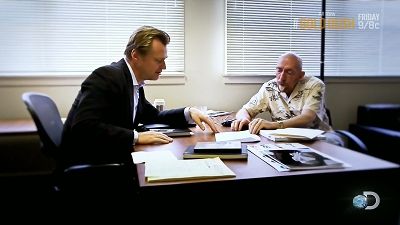
#9 - The Science of Interstellar
Season 2014 - Episode 15 - Aired 10/29/2014
Kip Thorne, the physicist who assisted Nolan on the scientific aspects of the film Interstellar, shows us that the movie’s jaw-dropping events and stunning, never-before-attempted visuals are grounded in real science. Thorne shares his experiences working as the science adviser on the film and then moves on to the science itself. In chapters on wormholes, black holes, interstellar travel, and much more, Thorne’s scientific insights—many of them triggered during the actual scripting and shooting of Interstellar—describe the physical laws that govern our universe and the truly astounding phenomena that those laws make possible.
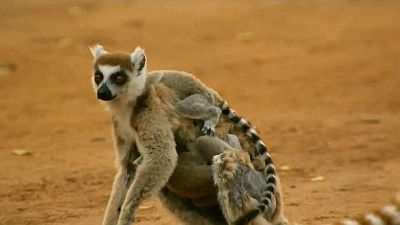
#10 - The Real Apes of the Planet
Season 2014 - Episode 14 - Aired 10/21/2014
This Documentary explores the surprising and mind-blowing similarities that humans share with our fascinating primate cousins. Passing on family traditions and grooming practices as well as ingenious survival tactics and the primates' ability to solve complex problems and form communities with a hierarchy system, the special highlights devoted parenting to fun-loving kids. Viewers also witness how, akin to humans, apes may demonstrate deceitful behavior to get what they want, overindulge in life's pleasures and not always get along. With their highly intelligent minds, chimpanzees in Uganda demonstrate their problem- solving skills and tool use when posed with a honey challenge. The long-tailed macaques in Thailand find a clever way to floss after a meal, and an orangutan in Borneo maintains her personal hygiene with a little soap and water. In Iowa, a male bonobo named Kanzi picks his own food for a picnic; he uses lexigram and toasts marshmallows in a fire he makes himself while the white-faced capuchins in the rain forest of Costa Rica uncover the secret that the sap of the Guyabano tree acts as a mosquito repellent if rubbed on their fur. The Real Apes of the Planet uncovers how these animals are individuals with their own personalities and why brainpower is essential to primate survival.
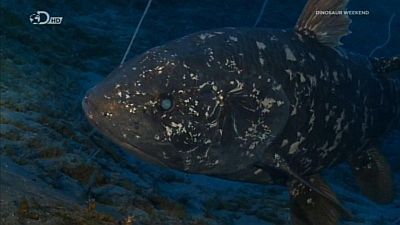
#11 - Diving with Dinosaur Fish
Season 2014 - Episode 13 - Aired 9/27/2014
The hunt for a mythic animal once thought to have been extinct for 65 million years: the coelacanth. It can be found 120 metres beneath the ocean off the wild coast of South Africa. French scientists and South African scientists teamed up with experienced Trimix divers, including Peter Timm, who discovered the coelacanths in Sodwana Bay in 2000 and award-winning underwater photographer Mr Laurent Ballesta and his advanced technical dive team to bring you this eye-opening documentary.
#12 - Nefertiti Resurrected
Season 2003 - Episode 18 - Aired 8/17/2003
Loved by a king. Hated by an empire. Erased from history. She could be the biggest find since King Tut. Has the famed Egyptian beauty, Queen Nefertiti, been found in a secret chamber deep in the Valley of the Kings? A Discovery Channel Quest expedition, led by Dr. Joann Fletcher and a team of internationally renown scientists from the University of York Mummy Research Team, hopes to find out. If they're right, the finding will be one of the greatest archaeological discoveries since Nefertiti's stepson-King Tutankhamen-was discovered in 1922. "Great Royal Wife" of the "renegade" pharaoh Akhenaten, Nefertiti's turbulent reign to life as never using cutting edge computer animations to recreate ancient Egypt's great temples, x-rays to reveal the telltale signs of foul play on her mummy; and forensic graphics to recreate the mummy's face. Have they found the ancient world's greatest beauty?
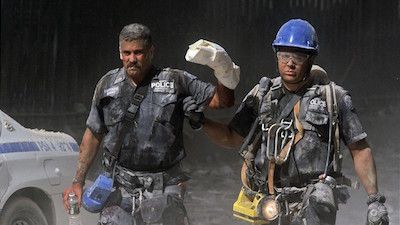
#13 - 9/11 Rescue Cops
Season 2014 - Episode 12 - Aired 9/11/2014
On the thirteenth anniversary of September 11th, Discovery tells the story of the heroism and sacrifice of the NYPD's elite Emergency Service Unit (ESU) and the E-Men heroes who were tasked with rescuing as many people as possible - by any means possible. Featuring previously unseen archive material and moving first-hand testimony, the truly inspirational story of the 9/11 rescue cops will be told on national television for the first time. New York City's elite ESU is a unique institution in law enforcement made up of around 300 highly specialized officers trained in search and rescue, building collapse and heavy weapons and hazardous materials containment. Of the 31 E-Men who rushed into the World Trade Center on that fateful day, only 17 survived. The 14 E-Men who perished were among 60 law-enforcement personnel who died on 9/11, the worst single day in US police history. Despite their devastating losses, the brotherhood of New York's E-Men has emerged stronger than ever and they are finally ready to tell their story.
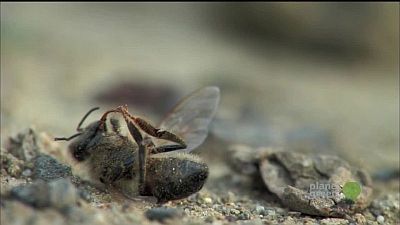
#14 - The Last Beekeeper
Season 2009 - Episode 34 - Aired 8/26/2009
Bees are vanishing. In 1950, there were 500,000 beekeepers in the U.S. Today there are less than 1,600. Examining the enormity of this loss, Jeremy Simmons' documentary The Last Beekeeper follows the lives of three commercial beekeepers (from South carolina, Montana, and Washington) over the course of a year as they struggle with Colony Collapse Disorder. When they take their bees to California's enormous annual almond pollination (an event so large it requires nearly all the bees in the US), it becomes painfully and poignantly clear the bind they are in. "If all the bees die, what do you have to live for?" asks one of the beekeepers. It's a question for all of us. The cause of Colony Collapse Disorder remains unknown and if honeybees continue to decline at the same rate, they will cease to exist in the U.S. by 2035. Jeremy Simmons' buzz-worthy documentary The Last Beekeeper, a World of Wonder film produced by Fenton Bailey and Randy Barbato. Emmy Award winner for "Outstanding Nature Programming" 2010.
#15 - Island of the Pygmy Mammoth
Season 2002 - Episode 17 - Aired 5/13/2002
Mammoths have always fascinated people. From the creators of the earliest known cave paintings and carvings to the 20th century practitioners of modern art and even to today's tourists, humans have tried to grasp the essence of this magnificent creature - its enormous size, strength and beauty and its coexistence with and importance to humans. In 1994, palaeontologists made the remarkable discovery of a pygmy mammoth on Santa Rosa Island, the most complete collection of its kind in the world.
#17 - Who Was Jesus? Part 1
Season 2009 - Episode 31 - Aired 4/5/2009
Childhood (5 Apr. 2009) tt1904765
#18 - Russian Yeti: The Killer Lives
Season 2014 - Episode 10 - Aired 6/1/2014
On February 2, 1959, nine college students hiked up the icy slopes of the Ural Mountains in the heart of Russia but never made it out alive. Investigators have never been able to give a definitive answer behind who - or what - caused the bizarre crime scene. Fifty-five years later, American explorer Mike Libecki reinvestigates the mystery - known as The Dyatlov Pass incident - but what he uncovers is truly horrifying. Follow Mike as he traces the clues and gathers compelling evidence that suggests the students' deaths could be the work of a creature thought only to exist in folklore.
#19 - The Supernaturalist
Season 2011 - Episode 60 - Aired 6/29/2011
The Supernaturalist with Dan White Dan White performs mind-blowing magic: manipulating physical objects, performing surprising card tricks and making items appear from seemingly thin air. All of this, he admits, is merely an illusion. White has a mission: to find REAL magic. White travels to a remote corner of the planet and finds himself in a place where magic isn't just tricks. It is believed to be very real... and even dangerous. Locals in the Himalayan country of Nepal believe there are monks within its borders who use their powers to harm anyone who crosses their path. White relies on his talents as an illusionist to open doors normally closed to outsiders in an attempt to find one of these feared monks and - hopefully - witness his true magic. White's mission will introduce him to many people, each getting him one step closer to the men in the mountains.
#20 - Surviving the Kill Zone
Season 2014 - Episode 9 - Aired 5/13/2014
Surviving the Kill Zone transports viewers to Africa during the final days of the longest dry season in living memory. More than 65 high-tech, remote-control cameras and expert visual teams film the wild animals of Zambia's Luangwa Valley. Thirst has trapped the hungry animals close to the Luangwa River - the last substantial source of water and food for hundreds of miles - and its banks and surrounding land are transformed into killing fields. The valley has become a temporary home to an extraordinary assortment of herbivores and predators, including lions, leopards, wild dogs, elephants, Nile crocodiles and hippos. Surviving the Kill Zone gives viewers unprecedented access to the both the harrowing and uplifting sides of the circle of life as these species collide in a daily battle for existence
#21 - Yellowstone: Brink of Disaster
Season 2013 - Episode 27 - Aired 12/30/2013
With forest fires destroying the landscape and a super volcano just waiting to explode, researchers at Yellowstone National Park use technology to understand triggers of a catastrophic event.
#22 - Flight 370: The Missing Links
Season 2014 - Episode 6 - Aired 4/16/2014
In an age when we can use apps to locate handheld devices, the special also looks at how a state-of-the-art airliner and its 239 passengers and crew can simply vanish. Since flight MH370 went off the grid on 8March 2014, questions about flight safety have once again taken centre stage. In an attempt to answer some of these questions, FLIGHT 370: THE MISSING LINKS addresses seven missing links: airport security, air traffic control, on-board communication systems, mechanical failure, tracking (both radar and satellite), international cooperation, and the black box.
#23 - Captain Philips-Somali Pirates Inside Story
Season 2014 - Episode 5 - Aired 2/26/2014
Told through eyewitness accounts, exclusive Navy footage and hijacked with extra facts, this is the story of Captain Phillips and crew aboard the Maersk Alabama and their dramatic rescue after being taken hostage by Somalian Pirates. (Source: Discovery Channel)
#24 - Raising the Kursk
Season 2002 - Episode 14 - Aired 3/24/2014
K-141 Kursk was an Oscar-II class nuclear-powered cruise missile submarine of the Russian Navy, lost with all 118 hands when it sank in the Barents Sea on August 12, 2000. At 154m long and four stories high it was the largest attack submarine ever built. Our film reenacts the explosion and actual footage portrays the raising of the submarine. (By CineNova for Worldwide Discovery Channel, with NBC’s ‘Dateline’.)
#25 - Mayday Fire in the Hold
Season 2012 - Episode 28 - Aired 8/10/2012
When mysterious cargo boxes ignite on ValuJet flight 592, they bring the whole plane down within a short time. The investigator struggle to find out what kind of cargo could possibly cause such fierce fire to bring a whole plane down.